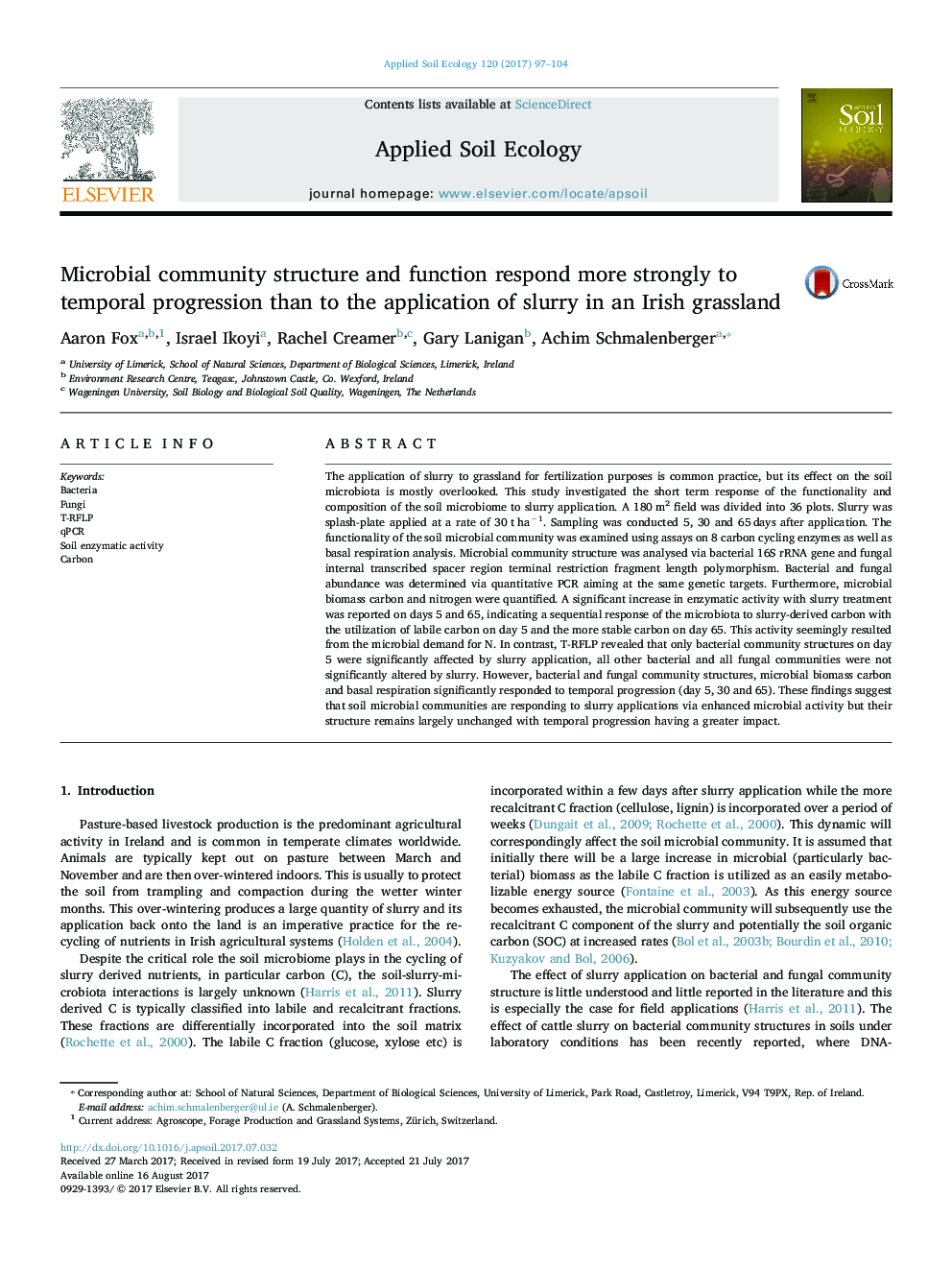| کد مقاله | کد نشریه | سال انتشار | مقاله انگلیسی | نسخه تمام متن |
|---|---|---|---|---|
| 5742576 | 1617764 | 2017 | 8 صفحه PDF | دانلود رایگان |
- Sequential response in enzymatic activity to slurry addition.
- Microbial biomass-N (but not âC) significantly affected by slurry addition.
- Microbial community composition largely unresponsive to slurry application.
- Impact of temporal progression effect was greater than slurry application soil microbes.
The application of slurry to grassland for fertilization purposes is common practice, but its effect on the soil microbiota is mostly overlooked. This study investigated the short term response of the functionality and composition of the soil microbiome to slurry application. A 180 m2 field was divided into 36 plots. Slurry was splash-plate applied at a rate of 30 t haâ1. Sampling was conducted 5, 30 and 65âdays after application. The functionality of the soil microbial community was examined using assays on 8 carbon cycling enzymes as well as basal respiration analysis. Microbial community structure was analysed via bacterial 16S rRNA gene and fungal internal transcribed spacer region terminal restriction fragment length polymorphism. Bacterial and fungal abundance was determined via quantitative PCR aiming at the same genetic targets. Furthermore, microbial biomass carbon and nitrogen were quantified. A significant increase in enzymatic activity with slurry treatment was reported on days 5 and 65, indicating a sequential response of the microbiota to slurry-derived carbon with the utilization of labile carbon on day 5 and the more stable carbon on day 65. This activity seemingly resulted from the microbial demand for N. In contrast, T-RFLP revealed that only bacterial community structures on day 5 were significantly affected by slurry application, all other bacterial and all fungal communities were not significantly altered by slurry. However, bacterial and fungal community structures, microbial biomass carbon and basal respiration significantly responded to temporal progression (day 5, 30 and 65). These findings suggest that soil microbial communities are responding to slurry applications via enhanced microbial activity but their structure remains largely unchanged with temporal progression having a greater impact.
Journal: Applied Soil Ecology - Volume 120, November 2017, Pages 97-104
